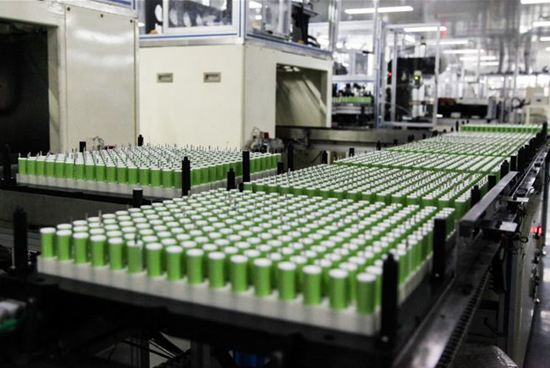Lithium Ion Battery Dead Fix-Method, Tool And Validity
Dec 19, 2019 Pageview:1413
When it comes to old batteries, most people just think of throwing them away and repairing them, but there's another way to get your old battery back to work. Okay, to make it fully operational again, you should recondition or fix your old battery; in fact, they can work just as well as the new ones.
Unlike many people think that battery reconditioning is a very simple process even if a person with no experience can still do it, all you need is some appropriate tools and some good time because it takes some time to complete the process, but after all this you will have a fully functional battery, it will return to its initial capacity.
Understanding how to re-condition your battery is very useful to you and, most importantly, to the environment; in this way you will help a great deal in reducing environmental pollution by a larger percentage; another thing is that you will minimize your spending on purchasing a new battery.
How To Fix Dead lithium ion batteries That Won’t Hold Charge Anymore?
Lithium ion (Li-ion) batteries can be recharged, but even rechargeable batteries have short cycles before degradation. They take more time to power up and lose their charge much quicker over time. And, if your smartphone's lithium ion battery has seen better days, you should try to bring it back to life before you spend the cash to fix it.
The steps which is used to fix the dead lithium ion batteries are as follows;
Step 1. Cut off your AC adapter's edge. That's okay. Simply cut it off. It's for a cell phone that's 10 years old, you're never going to use it again. To start with, it's frankly kind of strange that you saved it.
Step 2. Separate 1′′ from wire and strip it off. You've made booster cables *just*! That's perfect for you.
TIP:
Black wire = negative Striped or solid white wire = positive
THIS TWO IMPORTANT THINGS SHOULD NOT BE MIXED UP
Step 3. Remove the battery holding screws.
Step 4. Take off the top of the battery case.
Step 5. Cut the two side pieces of plastic. In order to remove your battery from your pump, these are the stuff you click in.
Step 6. Lift the pack from the battery.
Step 7. Set the volt reading multimeter. Choose the setting of 20 volts to test an 18 volt battery. This will allow you to read the most accurately. (If you don't skip to Step 9 with a multimeter and hope for the best)
TIP:
Volts are symbolized by a "V" on a multimeter with one or two straight lines across it, so it's the multimeter segment you're using. The segment of the straight line(s) under the V is not the line with the squiggly. The line that is straight.
Step 8. Read the voltage reflected on the multimeter by pressing the red probe to the positive (red) terminal and the black probe to the negative (black) terminal. The battery carried a charge of 0.06 volts in my case. That's *almost* nothing, but nothing at all.
Step 9. Plug in and use the wires of your AC adapter, power your dead battery. Only contact the black wire at the negative end (the one with the black wire going to it) and the white wire (or stripped wire) at the positive end (the one with the red wire going to it). Do this for about a minute on and off.
TIP:
Lithium ion batteries can obviously be charged with "pulse." That means you're holding down the wires for about 15 seconds, and then pulling them. Then again hold them down through and over.
DOUBLE CHECK IT THAT YOU HAVE CONNECTED POSITIVE AND NEGATIVE TO NEGATIVE TO POSITIVE.
Step 10. Check the battery pack voltage again. After boosting it should be higher than it was. (Again, if you don't have a multimeter, don't think about it – just click on without one) After a minute of boosting, mine went from 0.06 volts to 7.58 volts.
Step 11. Place the plastic cover back on the battery pack (just the part going into the charger) and place the battery on the charger to see if it's going to take a charge.
If you still only get a red flashing light and don't charge the battery, raise the battery a little bit more. I notice that the battery charger knows that when you raise it to between 10 and 14 volts, the battery is strong again.
Only continue to repeat the boosting "pulse" and check the battery until the charger eventually recognizes it and you get the green light.
What Tools Do You Need For Lithium Ion Battery Dead Fix?
The tools that are needed to fix dead lithium ion batteries are as follows;
A battery of lithium ion that will not charge.
An old charger for your mobile or AC adaptor
A multimeter. ( optional )
The procedure of fixing dead lithium ion battery is discussed above.
How Many Times Can A Lithium Ion Battery Be Fixed?
A Lithium ion battery's average projected life is about two to three years or 300 to 500 cycles of power, whichever occurs first. Each load cycle is a fully loaded, completely discharged, and fully recharged depending on the duration of use. This means that a lithium ion battery can easily be fixed 2 to 3 times in its life (lithium ion battery’s life ).
Lithium-ion rechargeable batteries have a limited lifespan and will slowly lose their ability to carry a charge. This power (aging) loss is permanent. The length of time it will drive the device (run time) decreases as the battery loses energy.
Do not leave unused batteries in the product or in storage for prolonged periods of time. Check the charging status or fix or recondition the battery as appropriate when a battery has been unused for 6 months.
When the batteries are not in use or during processing, lithium-ion starts to gradually discharge (self-discharge). Test the charging status of the battery regularly. Includes information on battery condition monitoring and battery charging directions in the consumer user's manual from which you can check it.
Leave Message
Hottest Categories
-
Hottest Industry News
-
Latest Industry News












